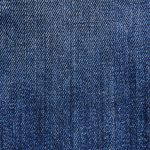Do you dread wearing white clothes because you think they’ll show sweat stains? You’re not alone. Many people avoid wearing white because they’re afraid of unsightly sweat marks. But does wearing white actually make sweat stains more noticeable? The answer is yes, but why is that?
To understand why white clothes show sweat stains more than other colors, you need to know a little bit about the science behind sweat. Sweat is made up of water, salt, and other chemicals that are produced by sweat glands in your skin. When you sweat, the moisture evaporates, leaving behind the salt and chemicals, which can leave visible stains on your clothes.
Since white clothes reflect light more than darker colors, any stains or discoloration will be more noticeable on white clothing. But don’t worry, there are ways to prevent and remove sweat stains, so you can confidently wear your favorite white garments without fear of embarrassing marks.
Table of Contents
The Science Behind Sweat
You’re probably wondering why you’re drenched in sweat after a workout, but the science behind it is simple – your body heats up, causing sweat glands to release moisture to cool you down.
Sweat is mainly composed of water, but it also contains electrolytes like sodium, chloride, and potassium. These electrolytes help regulate your body’s fluid balance and prevent dehydration.
When your body temperature rises, your brain sends signals to your sweat glands to start releasing sweat. As the moisture evaporates from your skin, it helps lower your body temperature by dissipating heat. This is why you feel cooler and less overheated after sweating.
While sweating is a natural and necessary bodily function, excessive sweating can be a sign of underlying health conditions like hyperhidrosis or thyroid problems. If you notice that you’re sweating more than usual or without any apparent reason, it’s best to consult a doctor for proper diagnosis and treatment.
Does Wearing White Make Sweat Stains More Noticeable?
When wearing light-colored clothing, it’s important to consider the potential for moisture to be more noticeable in certain areas. This is because sweat stains tend to show up more prominently on white fabric than on darker colors. However, it’s not just the color that plays a role in how visible sweat stains are.
The texture and thickness of the fabric, as well as the amount of sweat produced, can also contribute to how noticeable sweat stains are. To minimize the appearance of sweat stains when wearing white clothing, there are a few things you can do.
First, choose fabrics that are lightweight and breathable, such as cotton or linen. These materials are more forgiving when it comes to sweat stains, as they tend to absorb moisture more easily. Second, consider wearing an undershirt or sweat guards to help absorb excess moisture. Finally, keep an eye on your sweat production throughout the day and try to stay cool and dry as much as possible to minimize the appearance of sweat stains.
While white clothing can be a crisp and refreshing choice in the summer months, it’s important to be aware of the potential for sweat stains to show up more easily. By choosing the right fabrics, wearing sweat guards, and staying cool and dry, you can minimize the appearance of sweat stains and feel confident in your white clothing all day long.
Tips for Preventing Sweat Stains
To keep your favorite shirts looking fresh and clean, try out these simple tips for beating the heat and staying dry all day.
First, choose the right fabric. Look for clothing made from natural fibers like cotton or linen, which are breathable and help absorb moisture. Avoid synthetic fabrics like polyester or nylon, which can trap heat and sweat against your skin.
Second, use antiperspirant or deodorant. Antiperspirant helps reduce sweat by blocking sweat glands, while deodorant helps mask odors. Look for antiperspirants with aluminum chloride, which can be more effective at reducing sweat. Apply it in the morning after showering, and reapply as needed throughout the day.
Consider layering. If you tend to sweat a lot, consider wearing a light undershirt under your clothes. This can help absorb sweat and prevent it from staining your outer layer. Choose a light-colored undershirt to avoid it being visible through your clothing.
By following these simple tips, you can stay cool, dry, and sweat stain-free all day long.
How to Remove Sweat Stains
If you’ve got pesky sweat stains on your clothes, don’t worry – they’re not always permanent.
There are several methods you can try to remove them, including pre-treating stains with a mixture of water and vinegar or baking soda, using bleach on white fabrics, and trying alternative stain removal methods like using lemon juice or hydrogen peroxide.
With a little effort and patience, you can get your clothes looking fresh and clean again.
Pre-Treating Stains
You’ll want to make sure you take action quickly when dealing with stains on your white clothes. Pre-treating stains is a crucial step in removing them completely, so here’s what you need to do:
-
Identify the type of stain: Different stains require different treatment methods, so it’s important to know what you’re dealing with. Is it a protein-based stain, like sweat or blood? Or is it an oil-based stain, like salad dressing or makeup? Knowing the type of stain will help you choose the right pre-treatment product.
-
Apply pre-treatment product: Once you know what type of stain you’re dealing with, apply a pre-treatment product to the affected area. Make sure to follow the product’s instructions and let it sit for the recommended amount of time. This will help to break down the stain and make it easier to remove.
-
Wash as usual: After the pre-treatment has had time to work, wash your clothes as you normally would. Use the hottest water recommended on the care label and add a stain-fighting detergent.
Check the stain before drying, and if it’s still there, repeat the pre-treatment process before drying. With a little bit of effort, your white clothes can be stain-free and looking like new!
Using Bleach
Bleach is a powerful tool for brightening and removing tough stains from your clothes, but it should be used with caution and only on white or colorfast fabrics. To use bleach, simply add it to your washing machine during the bleach cycle or soak your clothes in a solution of bleach and water before washing.
Always follow the instructions on the label and use the recommended amount of bleach. Overuse of bleach can damage your clothes and cause them to become discolored. After using bleach, make sure to rinse your clothes thoroughly to remove any remaining residue.
With proper use, bleach can be a helpful tool in keeping your white clothes looking bright and stain-free.
Alternative Stain-Removal Methods
There are other methods for removing stains that can be just as effective as bleach. In fact, some people prefer alternative stain-removal methods because they are less harsh and less likely to damage clothing. Here are some options to consider:
| Method | How it Works | Pros | Cons |
|---|---|---|---|
| Vinegar | Breaks down the stain and neutralizes odor | Inexpensive and eco-friendly | May not work on all types of stains |
| Baking Soda | Absorbs moisture and neutralizes odor | Safe for all fabrics and easy to use | May not work on tough stains |
| Hydrogen Peroxide | Releases oxygen to lift stains and disinfect | Effective on a wide variety of stains | May bleach or discolor certain fabrics |
| Lemon Juice | Bleaches and breaks down stains | Natural and effective | May lighten or bleach colored fabrics |
| Salt | Absorbs moisture and lifts stains | Inexpensive and safe for all fabrics | May not work on all types of stains |
Each of these methods has its own strengths and weaknesses, so it’s important to choose the one that works best for your particular stain and fabric. Experiment with different methods to find the one that works best for you. And remember, always test a small, inconspicuous area of your clothing before attempting to remove a stain to avoid any damage or discoloration.
Keeping White Clothes Looking Fresh
If you want to keep your white clothes looking fresh, there are a few key things you need to keep in mind when it comes to washing, drying, and storing them.
First of all, make sure to separate your whites from any colored clothing when washing them to prevent any dye transfer.
When drying your white clothes, avoid high heat settings and opt for a lower heat or air-drying method to prevent shrinking or damage.
Lastly, store your white clothes in a cool, dry place away from direct sunlight to prevent any yellowing or discoloration over time.
Washing White Clothes
Keeping your white clothes looking fresh and clean can be a challenge, especially if you’re prone to sweating.
Washing your white clothes properly is essential to maintaining their brightness and preventing yellowing or discoloration caused by sweat.
Before washing your white clothes, it’s important to separate them from colored clothes to prevent any color bleeding.
Use a laundry detergent that is specifically designed for whites and follow the instructions on the label.
It’s also a good idea to add a scoop of baking soda to the wash to help brighten the clothes and remove any odors.
Additionally, avoid using too much detergent as it can leave a residue on the clothes, making them appear dull.
Finally, always wash your white clothes in cold water to prevent shrinking and fading.
By following these tips, your white clothes should stay looking fresh and clean for longer.
Drying White Clothes
After washing and rinsing your white clothes, it’s recommended to avoid using high heat when drying them in order to prevent shrinking and damaging the fabric. Instead, opt for a lower heat or air-dry setting on your dryer. If you have the space and time, line-drying your white clothes in the sun is also a great option.
To ensure that your white clothes don’t yellow or become discolored during the drying process, consider these tips:
- Add a cup of white vinegar to the rinse cycle to help remove any remaining soap residue and prevent yellowing.
- Avoid drying your white clothes with dark or brightly colored items, as any dye transfer can cause discoloration.
- Turn your white clothes inside out before drying to prevent any direct sunlight from fading the fabric.
- If you’re using a dryer, remove your white clothes while they’re still slightly damp to prevent over-drying and potential damage to the fabric.
Storing White Clothes
To maintain the brightness and quality of your freshly laundered white clothes, it’s important to store them properly. First, make sure your white clothes are completely dry before storing them. Any remaining moisture can cause mildew or yellowing over time. If you’re in a rush and need to store your white clothes before they’re completely dry, hang them outside or in a well-ventilated area until they’re fully dry.
Next, choose a storage area that’s cool, dry, and away from direct sunlight. Sunlight can cause yellowing and fading, so it’s best to store your white clothes in a dark area. You can also consider using acid-free tissue paper to wrap your white clothes, which can help prevent any discoloration or yellowing.
By following these simple storage tips, you can keep your white clothes looking bright and fresh for longer periods of time.
Alternatives to White Clothing
Looking for alternatives to white clothing? Consider colors, patterns, and fabrics that are better at hiding sweat stains. Opt for darker colors like black, navy, and grey, or patterns like stripes and polka dots that can help conceal sweat stains.
Additionally, choose fabrics like cotton, linen, and rayon that are more breathable and less likely to show sweat.
Colors That Hide Sweat Stains
White may not be the best choice when it comes to colors that hide sweat stains. If you’re looking for an alternative, consider darker colors like black, navy, or dark gray. These colors not only hide sweat stains better, but they also have a slimming effect on the body.
Another option is to wear prints or patterns that can help camouflage sweat stains. Busy prints and patterns can make it harder to spot sweat stains, so you can feel more confident and comfortable while wearing them. Just be sure to choose prints that are appropriate for the occasion, as some may be too bold or casual for certain settings.
Patterns That Hide Sweat Stains
You’ll be surprised at how effective certain patterns can be at concealing any unsightly sweat stains. Patterns that have darker colors around the armpit area, such as polka dots or stripes, can help hide any sweat marks that may appear. The darker colors absorb the moisture and blend in with the rest of the fabric, making it less noticeable.
Another pattern to consider is a small, all-over print. This can help camouflage any sweat stains that may appear by creating a busy visual effect that distracts the eye from any potential stains. However, be cautious of large prints, as they can actually draw attention to any sweat marks.
So, next time you’re picking out a shirt for a hot summer day, keep these pattern tips in mind to help keep you feeling confident and sweat-free.
Fabric Choices That Hide Sweat Stains
Choosing the right fabric can make all the difference in hiding those pesky sweat stains. Here are three types of fabric to consider when trying to avoid embarrassing sweat marks:
-
Cotton is a natural fabric that is breathable and absorbs moisture easily, making it a great choice for hiding sweat stains. Plus, it’s easy to find in a variety of colors and styles.
-
Linen, although it may wrinkle easily, is a great option for hiding sweat stains. It’s lightweight, breathable, and helps to wick away moisture from your skin.
-
Polyester blends are synthetic fabrics that are great for hiding sweat stains because they don’t absorb moisture like natural fabrics do. They also tend to dry quickly, so you don’t have to worry about unsightly wet marks. Look for blends that include cotton or other natural fibers for added breathability.
- What Is Similar to Chiffon? - April 23, 2024
- Which Material Is Better Crepe or Chiffon? - April 23, 2024
- How Durable Is Chiffon? - April 23, 2024






